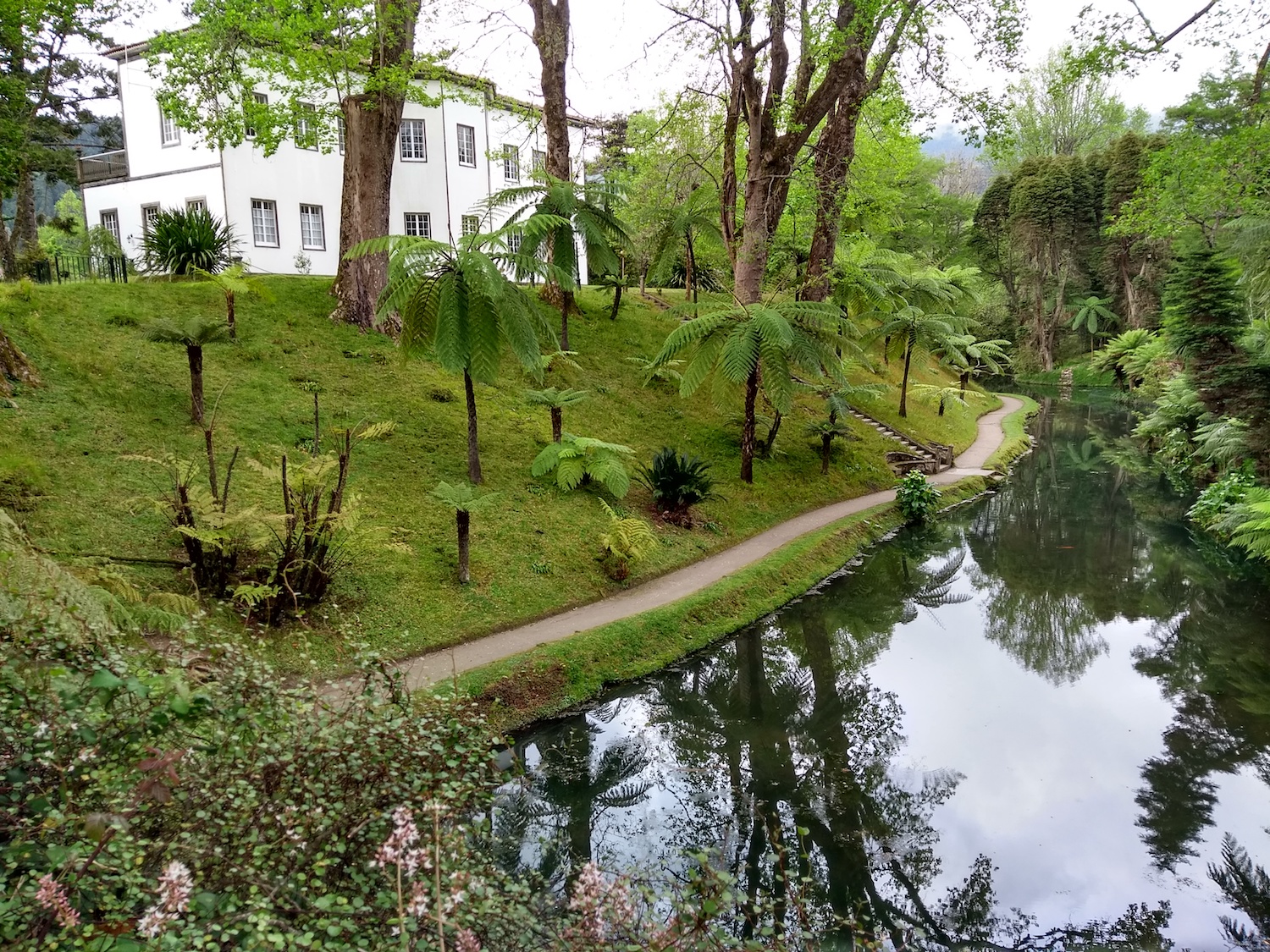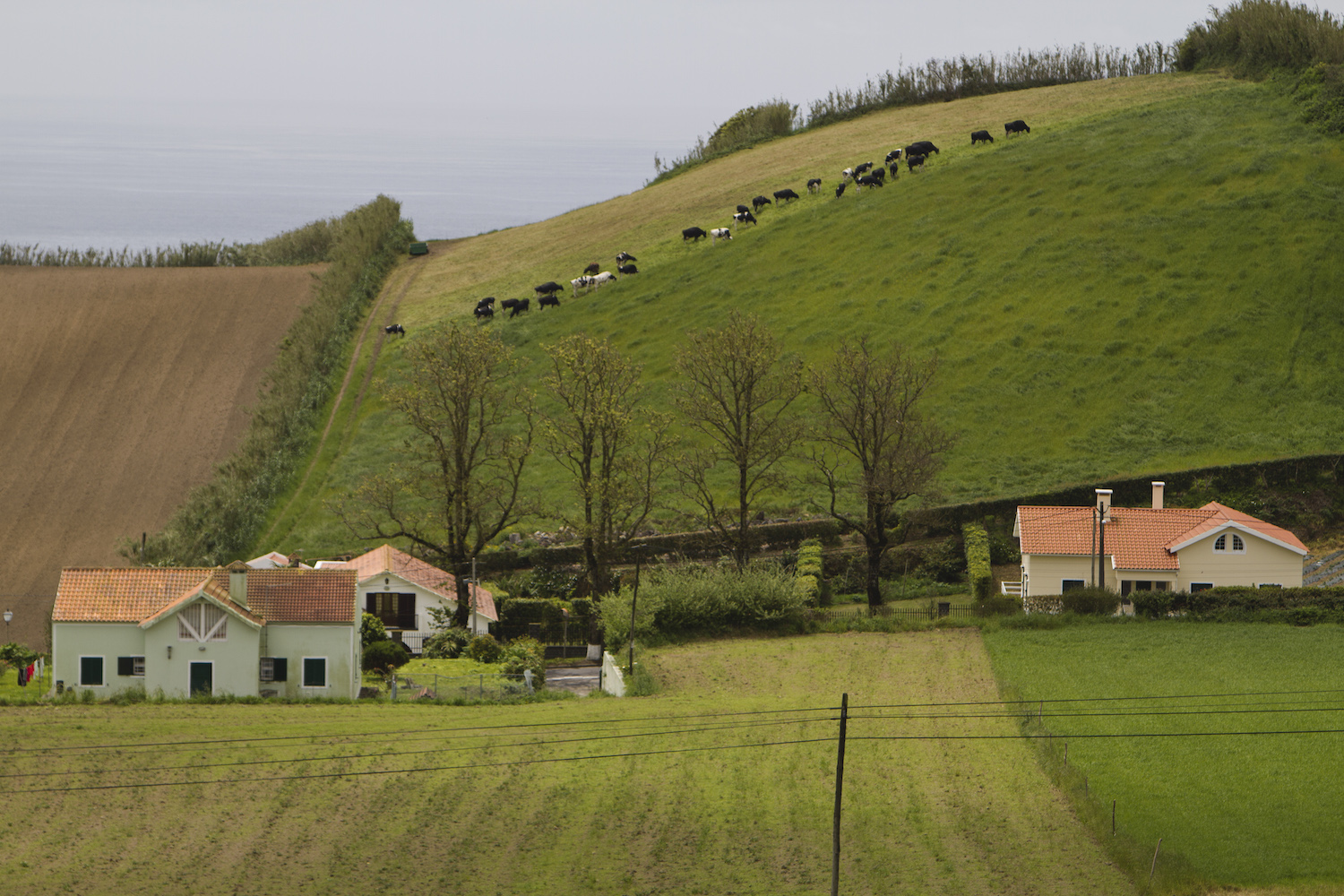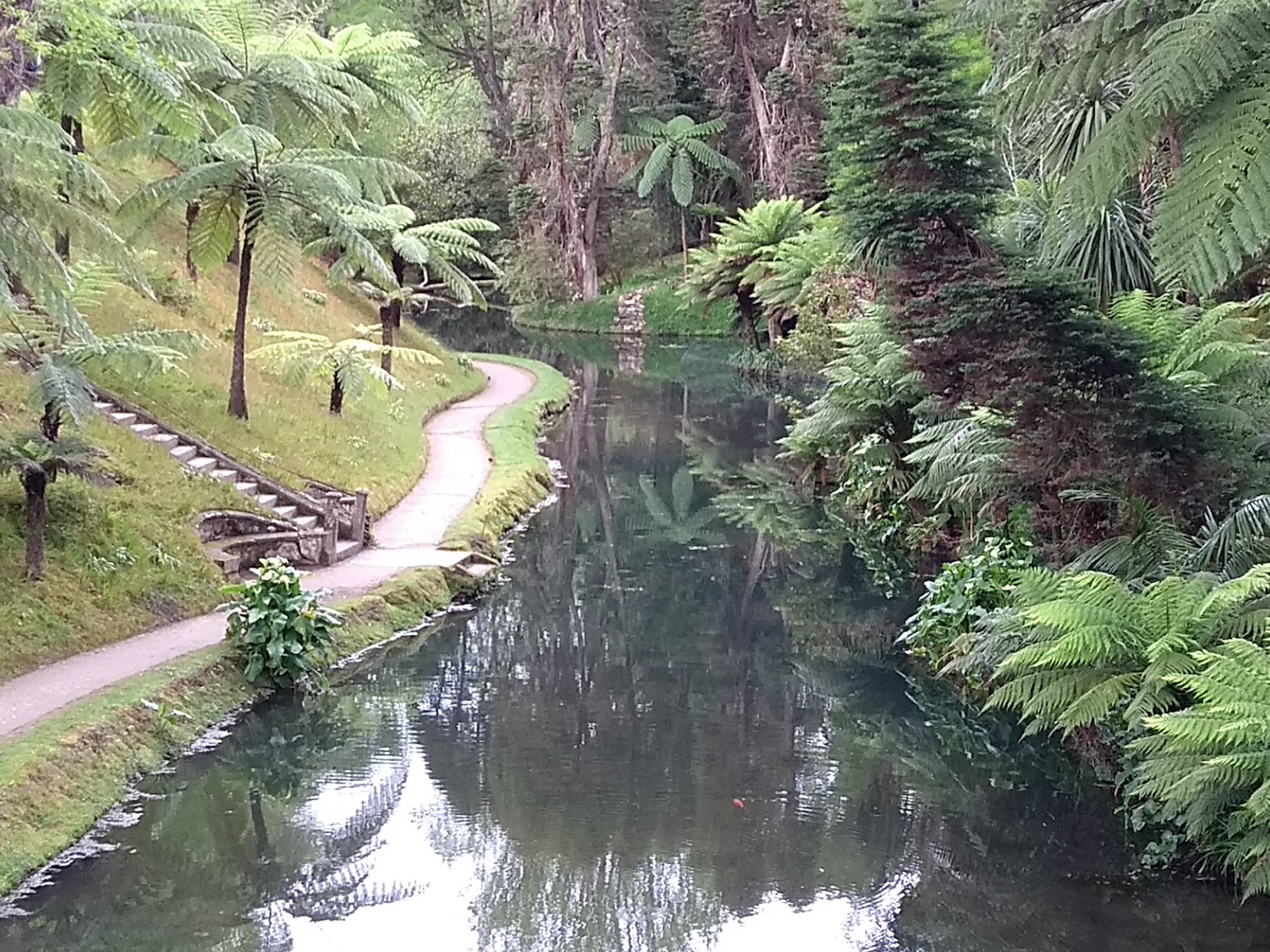
I circumnavigated the eastern end of the island on minor roads that hugged the rugged north coast, stopping in rural villages that felt a world away from the tourist centres and busy bypass road above. I saw tractors working the fields, and in one village, a cheerful road crew laying down fresh tarmac. But otherwise it was just me and the cows.

The coast eventually led me to Nordeste at Sao Miguel’s far eastern end. The town is a blip on the island’s tourist map because of the Farol do Arnel lighthouse: the oldest in the Azores, established 1876.

I wandered the cluster of narrow streets until I found a small bar where I could get a cold draft beer. It was three in the afternoon, and the only other customers were a table of old men shouting in the corner. I had the sense that they argued with each other there every day, probably about exactly the same things.
The same old man shouted all the others down. When they disagreed with him, he flung his arms in the air, pounded the table, and got up and pretended to walk away. It would have been a pleasure to join them for a beer, just to find out what they were so worked up about. But the local dialect was incomprehensible to me. I sipped my beer in silence with my notebook.

Later, I circled the end of the island, where Pico da Vara, Sao Miguel’s highest point, was lost in the clouds. Making a dash for the peak wasn’t an option, so I pulled off the road on it’s southern flanks to hike down into the jungle instead. It wasn’t a strenuous walk compared with previous hikes in and out of caldera, but the heat in the forest was suffocating, and the light was tinted green.

I stumbled over slippery log bridges and splashed through streams, surrounded by Japanese Cedar and Australian Cheesewood, before eventually reaching the crumbling stone walls of an abandoned water mill. A couple kilometres beyond that was Salto do Cagarrão, a waterfall where entire trees the size of telephone poles had been washed down by heavy rains.


Did the men who discovered these islands fight their way up these same jungle-choked rivers that had eroded a path down steep volcanic slopes? How much of this tangled riverine fauna was indigenous, and how much the result of generations of human contact? As luck would have it, I found an expert back in Furnas who could tell me.
The Terra Nostra Garden Hotel was my island base; an Art Deco oasis of silence backing onto one of Portugal’s most famous botanical gardens.
There has been a garden in the Furnas valley for over 200 years. A Boston merchant called Thomas Hickling, the Honorary American Consul in the Azores, built a wooden summer house on the site in 1775 and started the first garden. The Marquis da Praia bought the property in 1848, adding canals, grottoes, and imported plants from every continent. But the cost of keeping up such a site was difficult to sustain.
The gardens had fallen into decline by 1920, and they were finally taken over by the adjacent Hotel Terra Nostra in the late 1930’s. The Terra Nostra Company maintains the privately-owned botanical garden to this day.

I spent a couple hours wandering the paths and exploring the 12.5 hectare collection with Carina Costa, the Chief Botanical Engineer. Costa trained on the island of Terceira before coming back to work at the Terra Nostra Park, but she had grown up there. I guess you could say chlorophyll is in her blood. Carina’s father Fernando is Head Gardener. He’s worked in the garden for over 30 years and is largely responsible for how it looks today.
“My father organized the collection by family,” she told me, “and not by region or climate zone, like the majority of other botanical gardens.” And so the bromeliads were grown side by side with a wide range of other bromeliads, and cycads with cycads, providing uneducated novices like me with a fascinating glimpse into how these different plants are related, and how they evolved.

There was something prehistoric about the cycad garden, sheltered in a low bowl behind an encircling hedge. I expected to see dinosaurs or fish with legs around the next bend.
“Cycads are living fossils,” Carina told me. “They survived the separation of the continents.” At one time, in the Mesozoic era, most of the earth’s plant life would have been composed of them.
The further we walked, the more I began to see this place as a living library. There are at least 1800 different identified species in the Parque Terra Nostra, and maybe 100 others which still haven’t been classified. Geothermal water warms the ground enough to keep a wide range of otherwise unsuitable plants outdoors year-round.
I was most interested in the island’s indigenous species. Carina took me to a rather unprepossessing corner of the garden and pointed to a cluster of low plants.
“This is the endemic corner,” she said with a shrug. “Not terribly impressive compared to what you see now. But when the islands were discovered, they would have looked very much like this. A lot of low shrubs, juniper, laurel, no tall trees.”
It was nothing like the profusion of green I’d encountered when hiking in the jungle-like valleys north of Povoacao.
“These indigenous plants are now the most endangered flora on the island,” she said. “Humans have completely transformed the landscape. Invasive species introduced by settlers have displaced most of the native plant life, and agriculture and cutting trees for firewood or boat building changed the rest.”
“What about animals?”
“We have a couple of birds and a bat.”
“But how the hell would they get here?”
We were 1,360 km from continental Portugal. It was a question neither of us could answer.

The botanical gardens are open to the public during the day, and form the most popular tourist attraction in the area. Hotel guests have exclusive after-hours access to both the garden and the thermal pool between 6pm and 10am.
If you’d like to splash out on a romantic evening, I can highly recommend the tasting menu at the Terra Nostra restaurant. The chef will take you through the full range of the Azores pantry, from chorizo and steak to delicate rockfish, perfectly seared tuna and aged cheeses from several islands. Back this with sommelier Jose Manuel Tavares’s deep knowledge of the island’s wines, and you will have an unforgettable evening.
Finally, if you’re looking for hiking routes in the Azores, check out Azores Trails. And get a copy of the new guidebook by Paddy Dillon, available from Cicerone. I’ve picked up several of Paddy’s excellent hiking guides over the years, and dropped him a line when I heard he’d been in the Azores. He was kind enough to point me to his favourite Sao Miguel trails.

Get your FREE Guide to Creating Unique Travel Experiences today! And get out there and live your dreams...
